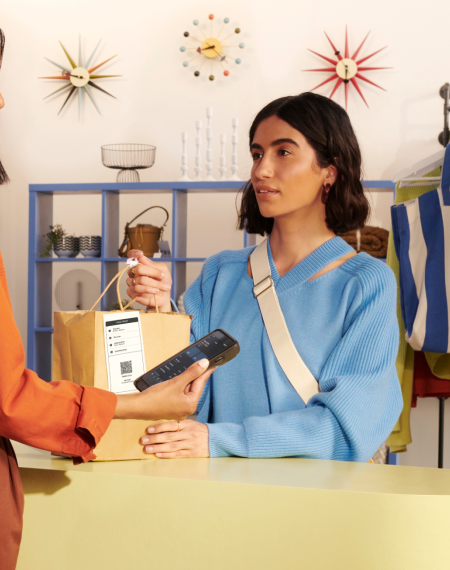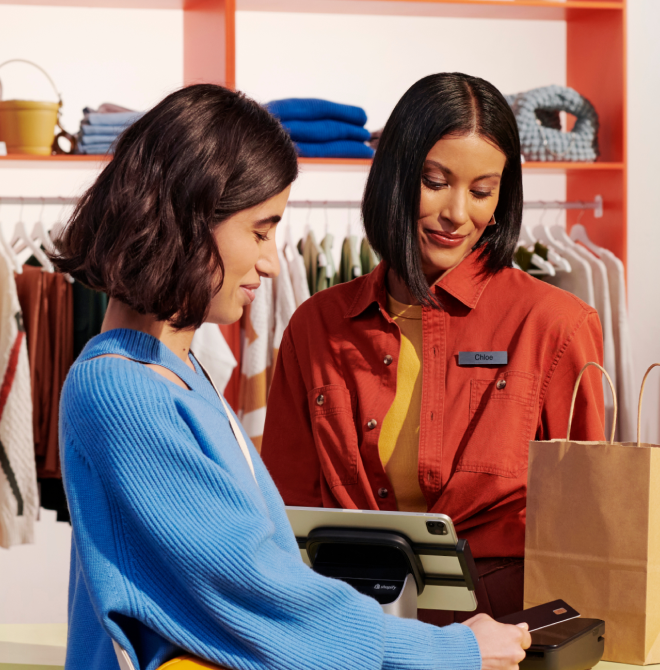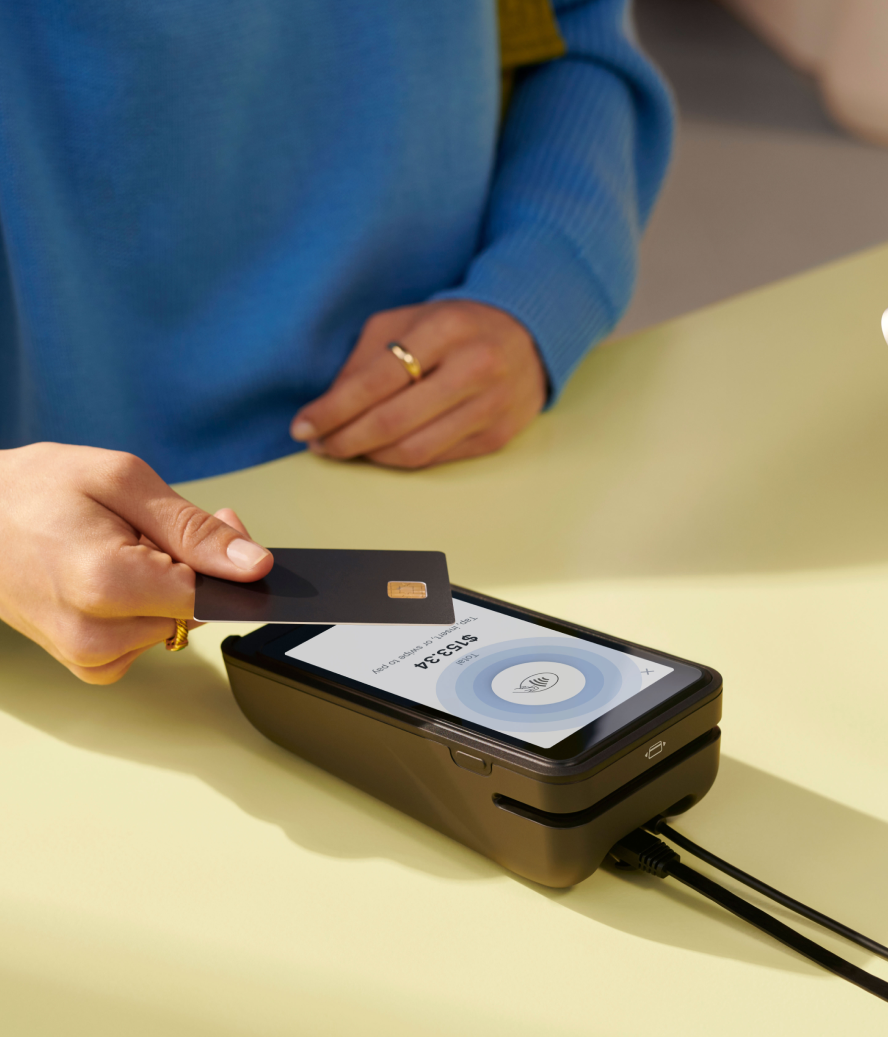Consumers are looking for a shopping experience that’s convenient and also saves them time and money. Buy online, pickup in-store (BOPIS) is a solution.
Data compiled in the Ecommerce Growth Guide found that 38% of consumers buy items online and then collect them in-store. These click-and-collect retail sales are projected to reach $154 billion by 2025.
However, figuring out how to implement this order fulfillment strategy in your retail store can feel like a huge undertaking. Limited technical infrastructure is the main hurdle—the last thing you want is a queue of unhappy click-and-collect customers waiting for their BOPIS orders because you don’t have the staff or processes to manage them effectively.
This guide shares how to solve that problem, with guidance on how to implement buy online, pickup in-store for your omnichannel retail business.
What is buy online, pickup in-store (BOPIS)?
Buy online, pickup in-store (BOPIS) is a fulfillment option that allows customers to shop from the comfort of their home. Instead of waiting for their order to arrive in the mail, customers can go to their nearest store or pickup location to collect the order once it’s ready.
How BOPIS works
Here’s how the BOPIS shopping and order fulfillment process works:
1. Customer places an online order
During the online checkout process, shoppers can skip traditional home delivery. They enter their address to find the nearest store to pick up their online purchases. Retailers can also use geolocation to display nearby store information automatically.
2. The retail store fulfills the order
When a customer has placed an online order, there are two order fulfillment scenarios:
- Default pickup in store: When all items in an online order are available at your retail store, you can locate them, pick them up, pack them, and set them aside for the customer to pick up.
- Ship to store: If items in an online order are not in stock at your retail store, you can still offer an in-store pickup option by enabling Store transfers. This allows customers to purchase items online and have them shipped or transferred to your store for pickup.
In either case, once the order is ready to collect, you can send a notification via email or text to inform your customer that their order is available for pickup.
3. Customer picks up their order in-store
Depending on your BOPIS strategy, you may do pickups in-store or at a designated pickup location. Some retailers are making BOPIS even more convenient by offering curbside pickup. The customer can drive to your storefront and be handed their order while staying in their car.
Regardless of your pickup strategy, shoppers should never feel confused when they opt to buy online, pickup in-store. Offer concise instructions about where and how to pick up products in order confirmation emails.
Tip: Customize the Shopify POS Smart Grid to quickly view scheduled pickups. Tap “Add tile”, then head to “Fulfillment” and choose “Pickup in-store”. This will show all orders that are prepared or marked as in-store pickup.

Benefits of BOPIS in retail
BOPIS is great for retailers with both a brick-and-mortar store and an ecommerce website and want to offer in-store pickup as a delivery method at checkout. It lets you optimize the omnichannel retail experience and merge online shopping and physical store experiences while making the buying process more convenient.
Increased store traffic
The BOPIS shopping experience provides your customers with the flexibility to choose how they want to fulfill their order. Convenience is key to improving the customer experience, and click and collect lets shoppers make a purchase and pick it up immediately if they want to.
Brick-and-mortar retailers can use BOPIS to compete with Amazon and other ecommerce-only companies that don’t have a storefront. It’s a great way to strengthen your omnichannel selling strategy and customer experience.
Plus, when customers stop by your store to pick up their orders, they might look around and browse for more products. They could also remember something they wanted to buy and spend more money in-store.
Reduced shipping costs
Instead of shipping orders individually from your distribution center to customers’ doors, BOPIS lets you send bulk shipments to your retail store or pickup point. When shoppers pick up orders from your store, you save on last-mile shipping costs and no longer have to absorb the cost of free shipping incentives.
If you don’t offer free shipping, BOPIS also lets consumers save money and time by picking up their purchase in-store or at a pickup point. They can save the $5 they might have spent on shipping while still enjoying the convenience of ordering online.

Immediate fulfillment
Merging online and physical store inventory tracking lets you fulfill orders from your store or distribution center—whatever the faster option is. This gives you more access and control over a more extensive assortment of inventory. It also gives you better insights into what products are available in real time, while fast inventory turnover frees up storage space to stock more bestsellers.
Plus, it's faster for shoppers who need an item urgently to buy it online and pick it up an hour later versus waiting one to three days for delivery. People want instant gratification, and providing the option to buy online and pickup in store is a way to offer it.
Guarantee the item is in-stock
With click and collect, you pick and pack the customer’s order before you notify them that it’s ready for pickup. This makes it 100% guaranteed that the product will be available when the shopper arrives.
Quick returns and exchanges
With the BOPIS strategy, returns or exchanges are processed immediately if the product doesn't meet a customer’s expectations. There’s no need to return the order and have either you or the customer absorb this return shipping cost.
BOPIS examples
Want to see the BOPIS model in action? Here are some examples of retailers who’ve seen incredible results from online, pickup in-store services.
Parachute
Ariel Kaye, founder of home furnishings brand Parachute, knew the importance of making it easy for customers to shop wherever and however they wanted. But the brand’s previous infrastructure made the operational aspect of managing omnichannel orders more complex than needed.
Parachute migrated to Shopify POS to address this challenge. Now, shoppers can view the brand’s full inventory online and check availability at the customer’s local store. When they’re ready to buy, they can complete their purchase online and head to their store to collect their order.
“With Shopify POS, we now have a single point of truth for our inventory, which makes everything flow much more smoothly,” Ariel says.
Since implementing this order fulfillment model with Shopify, Parachute processes around 3,500 BOPIS orders every year. Over the past four years, the portion of revenue derived from BOPIS has increased by 500%, hitting an all-time high in the fourth quarter of 2024, which brought in almost half of its annual BOPIS revenue.
Kowtow
Founded in 2006, apparel brand Kowtow operated a thriving ecommerce business before setting up a permanent flagship store in Wellington, New Zealand. It quickly learned the importance of a unified shopping experience—it found that 39% of customers used online and physical touchpoints to shop.
Kowtow leaned into this concept with BOPIS. But instead of processing orders manually like they used to, store associates could use Shopify POS to view scheduled pickups inside the POS system they were already familiar with—something founder Gosia Piatek says expedited the setup process.
“The click-and-collect rollout was done within a week and went online quickly,” Gosia says. “In my experience, it would have taken months with another POS system.”
BOPIS challenges and how to overcome them
BOPIS is a great omnichannel retail strategy that can increase sales and happier customers. But it still has its challenges.
Real-time inventory synchronization
If your inventory isn’t synced properly with your online store and brick-and-mortar shop, the BOPIS model could be a nightmare.
You want to avoid having to call or send emails telling click-and-collect customers that the item they just ordered is out of stock. Not only can it take your time away from helping in-store shoppers, but it’s also not a great experience for your customers.
💡Tip: Shopify is the only platform to build POS and ecommerce natively on the same platform. Inventory data from wherever you sell updates in one centralized system—and it all happens in real-time—no more stockouts, more happy customers.
Fulfillment speed and in-store space
Many of your customers may suddenly take advantage of your new BOPIS model. It's not a bad problem to have, but orders pile up, and you could run out of space in-store if numerous shoppers pick up at the same time.
Consider assigning BOPIS orders to specific employees and create a designated area in your store where people can line up to collect their purchases.
Investment to set up and manage BOPIS orders
For the BOPIS model to be successful, someone needs to be available to pick and pack the buy online and pick up in-store orders. It can hurt the in-store experience for traditional shoppers if staff are too busy preparing online orders for collection.
Depending on the size of your business, you may want to hire additional staff who can focus on reviewing and fulfilling click-and-collect orders.
Your technology infrastructure also impacts how long it takes to train staff to operate the system and fulfill BOPIS orders. Because Shopify’s centralized commerce operating system can handle inventory transfers, schedule BOPIS orders, and view pickup orders, you’ll only need to teach retail staff how to operate one system: the POS system they’re already familiar with.
“Shopify is super simple to pick up and easy to learn,” says Ariel Kaye, founder of Parachute. “And it is nice for a regular part-time associate to be pretty self-sufficient in setting up their POS account.”

Lack of customer awareness
Spending money on a new sales strategy won’t yield a positive return on investment (ROI) if shoppers don’t know about it.
Boost customer awareness by creating a BOPIS campaign and sharing it across your marketing channels, including email and social media. You can also put up signage in your retail store so customers know they can pick up online orders in the future.
Get started with BOPIS and click and collect
An omnichannel retail strategy gives your customers a more convenient shopping experience and a proven track record of increasing sales. Buy online, pickup in-store does exactly that.
The best part is that the BOPIS setup process isn’t complicated with Shopify POS. Inventory, orders, and customer data live in one centralized commerce operating system. Shoppers have ultimate flexibility in how they shop and receive their orders, while your team has the infrastructure to serve those customers efficiently.
Read more
- How To Integrate Your Point of Sale With Shopify
- Showrooming and Webrooming: How They Can Help Your Business Grow
- 53 Data-Backed Retail Statistics Shaping Retail and Beyond
- Pros and Cons of a Buy Online, Return In-Store (BORIS) Policy
- 5 Strategies to Future Proof Your Brick-and-Mortar Store
- 5 High-Impact Examples to Help Retailers Build Trust With Online Customers
- How Retail Store Owners Can Optimize Their Mobile Presence
- Lightspeed vs Shopify POS: The Best of All Lightspeed Alternatives
- Why Retail Store Owners Need to Be Thinking About Unboxing (+ 5 Tips to Do It Well)
- Bricks to Clicks: How to Move Your Brick-and-Mortar Business Online
BOPIS FAQ
What does BOPIS mean in retail?
BOPIS stands for buy online, pick up in-store. It’s a retail strategy that allows customers to shop from the comfort of their home and go to the store or pickup location once the order is ready.
What is the BOPIS model?
Buy online, pickup in-store (BOPIS) is a business model that allows customers to place orders through your ecommerce website and schedule pickup from their nearby store, rather than waiting for it to be shipped.
What is the difference between BOPIS and ship-to-store?
BOPIS and ship-to-store are fulfillment strategies that let customers pay for orders online and collect them in-store. With ship-to-store, however, the item isn’t necessarily in-stock and ready for immediate collection. It’s usually transferred from the retailer’s warehouse to the store for pickup.
What is the difference between BOPIS and curbside pickup?
Curbside is a type of buy online, pickup in-store (BOPIS). The main difference is that customers don’t have to physically enter the store to pick up their order with curbside pickup. A retail associate will bring it out to them.








